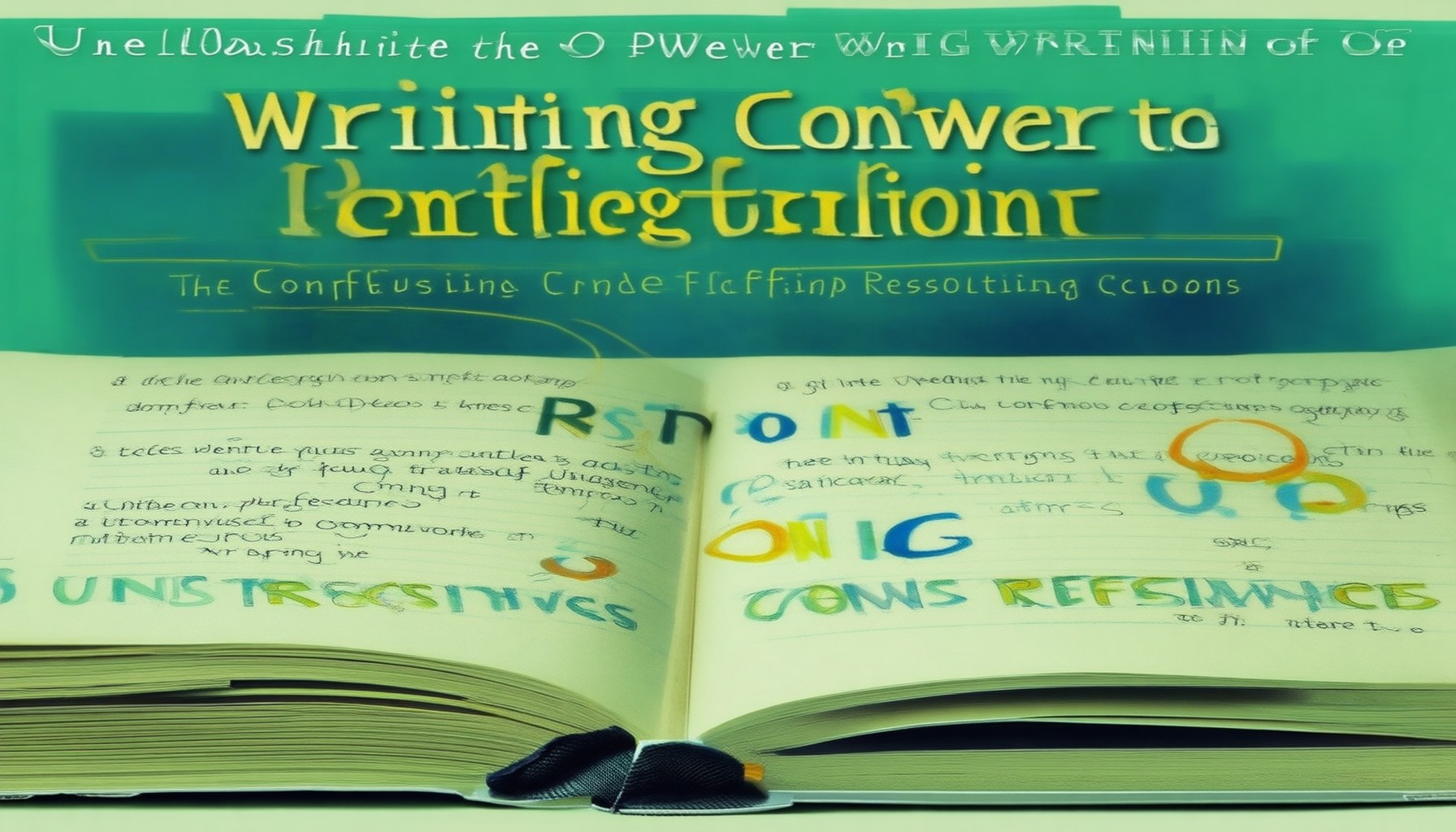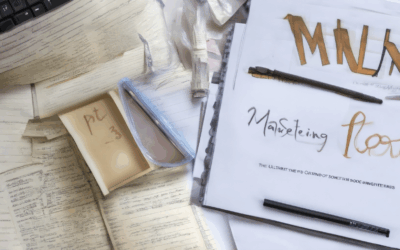Conflict is the heartbeat of every compelling story, driving tension, character growth, and emotional depth. Yet, crafting effective conflict resolution is an art that separates mediocre writing from unforgettable narratives. Whether in relationships, literature, or business, the ability to navigate and resolve conflicts skillfully is essential. This guide delves into the intricacies of writing conflict resolution, exploring strategies, techniques, and methods to create resolutions that satisfy both characters and readers. From understanding the core components of conflict resolution to mastering the process, this exploration will equip writers with tools to craft compelling conflicts and meaningful resolutions, ensuring their stories resonate long after the final page.
Key Takeaways
– Master the Five Steps of Conflict Resolution: Identify the root cause, communicate openly, collaborate on solutions, apply effective techniques, and follow up to repair relationships.
– Excel with the 4 Rs of Conflict Resolution: Recognize issues early, respond thoughtfully, resolve disputes fairly, and reconcile relationships to foster lasting harmony.
– Use the 5-5-5 Method for Structured Conflict Resolution: Engage in active listening, hold constructive discussions, and plan actionable solutions within set time frames to achieve efficient resolutions.

What Are the 5 Cs of Conflict Resolution?
The 5 Cs of conflict resolution are essential skills for resolving disputes effectively. These principles provide a framework for addressing conflicts constructively and achieving mutually beneficial outcomes.
- Communication
- Open and honest dialogue is crucial.
- Active listening ensures understanding.
- Clarify expectations and concerns.
- Use “I” statements to express feelings.
- Seek clarification to prevent misunderstandings.
-
Compromise
- Identify common ground.
- Be flexible and open to alternatives.
- Understand each party’s priorities.
- Look for solutions that satisfy both sides.
- Focus on the greater good rather than winning.
-
Control
- Manage emotions to stay calm.
- Acknowledge the other person’s perspective.
- Pause before reacting impulsively.
- Use techniques like deep breathing to regain composure.
- Stay focused on the issue at hand.
-
Cooperation
- Work together toward a solution.
- Share resources and expertise.
- Be collaborative rather than confrontational.
- Show respect for differing opinions.
- Aim for win-win outcomes.
-
Consensus
- Reach an agreement everyone accepts.
- Consider diverse viewpoints.
- Use consensus-building exercises.
- Be prepared to compromise.
- Ensure the solution is sustainable.
By mastering these 5 Cs, conflicts can be resolved more efficiently, fostering stronger relationships and better outcomes. Remember, effective conflict resolution is about understanding, empathy, and working together to find solutions that benefit all parties involved.
Learn more about conflict resolution strategies .
What Are the 5 Conflict Resolution Strategies?
- Avoiding: This strategy involves steering clear of conflict by delaying decisions or avoiding confrontations. It is often used when the issue is not critical and can be handled later.
- Competing: In this approach, the focus is on winning at the expense of others. While it can resolve conflicts by asserting dominance, it often leads to long-term issues and strained relationships.
- Compromising: Compromise involves finding a middle ground between conflicting parties. It requires both sides to give up something to reach an agreement, fostering mutual understanding and cooperation.
- Collaborating: Collaboration emphasizes working together to find solutions that satisfy everyone involved. This approach builds trust and ensures that all voices are heard, leading to more sustainable resolutions.
- Accommodating: Accommodation involves one party adjusting to the needs of the other, often by making concessions. This strategy fosters empathy and can help maintain relationships despite differences.
For more insights into effective conflict resolution techniques and resources, visit our conflict resolution guide .

The Four Cs of Conflict Resolution
The Four Cs of conflict resolution are essential tools for resolving disagreements effectively. They include:
- Communication
- Cooperation
- Compromise
- Constructive Conflict Management
1. Communication
Effective communication is the foundation of conflict resolution. It involves:
- Active Listening: Paying full attention to the other party’s perspective without interrupting.
- Expressing Feelings: Sharing emotions calmly and clearly without blaming.
- Seeking Clarification: Asking questions to understand the situation better.
2. Cooperation
Cooperation focuses on working together toward a shared goal. It involves:
- Teamwork: Combining strengths and perspectives to find solutions.
- Trust Building: Creating a safe environment for open dialogue.
- Shared Goals: Aligning efforts to achieve mutual objectives.
3. Compromise
Compromise is about finding middle ground. It includes:
- Flexibility: Being willing to adjust positions based on others’ needs.
- Prioritizing Outcomes: Identifying what matters most and finding solutions that work for everyone.
- Open-Mindedness: Considering different viewpoints and solutions.
4. Constructive Conflict Management
Handling conflict constructively ensures it becomes a positive experience. It involves:
- Staying Calm: Managing emotions and reactions to prevent escalation.
- Problem-Solving: Focusing on solutions rather than blame.
- Using “I” Statements: Expressing feelings without assigning blame.
By mastering these four Cs, individuals and teams can resolve conflicts more effectively, fostering stronger relationships and better outcomes.

What Are the Five Steps of Conflict Resolution?
Conflict resolution is a crucial skill for maintaining healthy relationships and resolving disputes effectively. Below are the five essential steps to address conflicts:
- Identify the Conflict : Recognize the source of the disagreement or misunderstanding. Understand each party’s perspective and emotions involved.
- Communicate Openly : Engage in a respectful dialogue where both sides can express their feelings and concerns without interruption. Active listening is key to understanding each other’s viewpoints.
- Seek Solutions Together : Collaboratively explore potential solutions. Focus on finding mutually beneficial outcomes rather than winning the argument.
- Apply Conflict Resolution Techniques : Use methods like “I” statements to express feelings calmly, stay composed, and avoid blame. Consider mediation or arbitration if needed.
- Follow Up and Repair Relationships : After resolving the conflict, ensure trust is rebuilt. Regular check-ins can help maintain peace and prevent future issues.
By following these steps, conflicts can be addressed constructively, fostering stronger relationships and mutual understanding.
What are the 4 R’s of conflict resolution?
The 4 R’s of conflict resolution are a widely recognized framework for effectively managing and resolving disputes. Here’s a breakdown:
- Recognize : Identify the source of the conflict early and understand the emotions involved. Addressing issues promptly can prevent them from escalating.
- Respond : Act thoughtfully and constructively. Listen actively to all parties involved and seek to understand their perspectives before reacting.
- Resolve : Find a mutually agreeable solution through methods like mediation or negotiation. Focus on fairness and transparency to rebuild trust.
- Reconcile : Work toward healing relationships and establish clear boundaries moving forward. Celebrate successful resolutions to encourage positive behavior.
By following these steps, conflicts can be addressed in a structured and empathetic manner, leading to lasting solutions.

The 5-5-5 Method of Conflict Resolution
The 5-5-5 method is a structured approach to resolving conflicts effectively. This method involves three distinct phases, each lasting exactly five minutes:
- Listening Phase (5 minutes): During this phase, each participant listens actively without interrupting. The goal is to fully understand the other person’s perspective and emotions.
- Discussion Phase (5 minutes): Following the listening phase, both parties engage in a constructive dialogue. Using “I” statements can help express feelings without blame, fostering empathy and mutual understanding.
- Planning Phase (5 minutes): The final phase focuses on developing a plan to address the conflict. This may involve agreeing on actions, solutions, or steps to prevent future conflicts.
This method ensures fairness and structure, allowing both sides to express themselves equally and arrive at a constructive resolution. By setting clear time limits, it reduces anxiety and keeps the discussion focused, promoting efficient and effective conflict resolution.





0 Comments